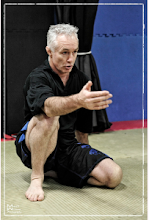
In my view, after nearly 25 years of BJJ practise, I believe the two most important principles that underpin true mastery on the mat, are the principles of weight application and use of leverage. The thrust of this article is to shed some light on the less complex of these two principles – the use of leverage.
As with many of life’s most important secrets (please excuse the word), I think that most people do not appreciate the difference between knowing a word and understanding the real meaning and sub-structure that the word is meant to convey. For decades I thought I understood what leverage meant – and now I know that I did not. I knew the word, I could use it in a sentence (just like my school-teachers no doubt asked me to) but I didn’t get it – nor could I apply it on the mat, or in the larger landscape of my life with any measure of consistency. Even now I hesitate to say that I understand it; for one thing that I do understand is that there are many, many degrees of understanding, in any given subject. Nevertheless, I am happy to share what I have discovered so far, in the hope that others may surpass my own humble efforts.
Leverage (what the dictionary says):
the mechanical advantage gained by using a lever; a physical phenomenon associated with the equilibrium or motion of objects; positional advantage; power to act effectively.My own interpretation however, is not so much about the clinical definition, but rather an attempt at conveying the kind of understanding that allows for application in real life. I am very results-oriented and as such, I want my students (and readers) to be able to do something with the information that I am trying to share.
On the mat: To make use of the concept of leverage during grappling, we must first realise that the levers we are talking about here, are really the bones of our skeletal system; the spine, the scapula, the humerus, the femur, etc. Even if you don’t have a good understanding of anatomy (but as a martial artist you most definitely should) then it can help to think of the body as a stick-figure; pretty much as a child would draw it. Picture the spine (longest lever in the body), the shoulders, the hips, the upper arms, the lower arms, the upper legs, the lower legs; you get the idea. Once we can clearly picture this system of levers that lie hidden between muscle and flesh, we must then identify the ends of the levers and begin to develop an idea of how we can effect the movement of the body as we apply force to them. Again, picturing a puppet may help, push this way, pull that way, the puppet dances to our command; and so it is with people.
So far so good; the concept of the bones of the body as levers and how we can move it (or prevent it from moving) is not such a difficult thing to understand. The more challenging part of the trick is to develop skill in the many methods we can use to apply force to those ‘ends of the levers’, in the directions we need, to get the outcomes we want; that part takes time; in fact, I have met many people with over a decade of grappling training under their belts, who have yet to develop the essential habit of applying force to the ‘end’ the lever’. I’ll say it again; always apply force to the ‘end of the lever’. To do it properly, and with consistency, we must develop and understanding of ‘weight-application’, which is a far more difficult skill to master; if any are interested, I shall write more on this in a later article.
Off the mat: Now here is the true test of understanding; once we gain an insight into the power of leverage, can we shift that understanding and point it at other aspects of our lives? Can we point it at things like investment, time-management, building great relationships, etc? Are we spending a dollar to make a dollar or spending a dollar to make ten? Are we working 12 hours a day to sleep 8 and enjoy 4 or are we working 4, sleeping 8 and enjoying 12? Are we regularly doing the little things that our partners, wives, girlfriends, children and buddies appreciate or are we waiting until the moment of crisis before we scramble to salvage something that need not have suffered damage in the first place? Understanding that we can also achieve a lot for a little in our lives away from the mat is perhaps the best use of leverage we could hope for. As the legendary strategist and swordsman, Miyamoto Musashi, once said (to paraphrase) – ‘to understand one thing is to understand a thousand things’. This is leverage at work.
I hope I have you thinking,
JBW


































